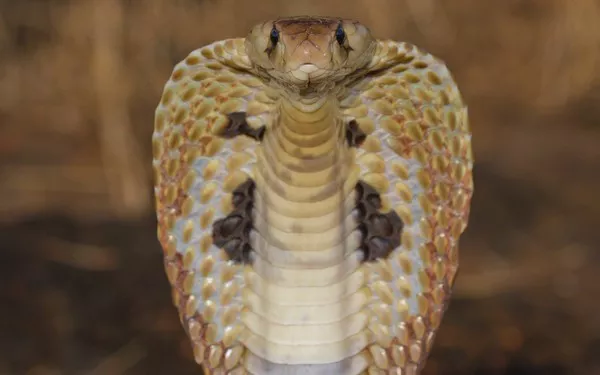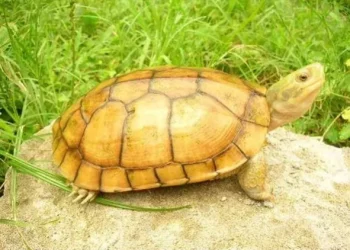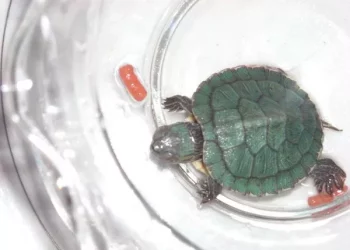The corn snake (Pantherophis guttatus) is a popular choice among reptile enthusiasts due to its docile nature, attractive coloration, and relatively manageable size. For those new to snake keeping or considering adding a corn snake to their collection, understanding the typical size range of this species is crucial. In this article, we will delve into the size of corn snakes, exploring the factors that influence their growth, variations in size among different morphs, and the implications of their size for housing and care.
Overview of Corn Snake Size
Corn snakes are medium-sized constrictor snakes native to the southeastern United States. In the wild, they typically measure between 3.5 to 5 feet (1.1 to 1.5 meters) in length, although some individuals can exceed this range. The size of a corn snake can be influenced by a variety of factors, including genetics, diet, habitat conditions, and overall health.
Growth Patterns and Development
Corn snakes exhibit a distinct growth pattern from birth to adulthood. Understanding these patterns is essential for proper care and housing.
Neonates: Hatchlings, or neonates, are relatively small compared to adults. At birth, they usually measure between 10 to 15 inches (25 to 38 cm) in length. Neonates have a rapid growth rate, especially in their first year, during which they can grow several feet in length.
Juveniles: As they grow, juvenile corn snakes increase in size more slowly. By the end of their second year, they typically reach lengths of around 2 to 3 feet (60 to 90 cm).
Adults: Adult corn snakes generally reach their full size between 3 to 5 years of age. Males are often smaller than females, with males typically averaging between 3.5 to 4.5 feet (1.1 to 1.4 meters) and females reaching lengths of 4 to 6 feet (1.2 to 1.8 meters).
Factors Affecting Size
Several factors influence the final size of a corn snake. These factors include:
Genetics: Genetics plays a significant role in determining the potential size of a corn snake. Breeders may select for size traits, leading to variations in the size of snakes even within the same species.
Diet: A balanced diet is crucial for optimal growth. Corn snakes primarily eat rodents in captivity, and their size can be influenced by the frequency and size of their meals. Overfeeding can lead to obesity, while underfeeding can result in stunted growth.
Temperature and Habitat: Proper environmental conditions are essential for growth. Corn snakes require a temperature gradient in their enclosure to regulate their body temperature effectively. Inadequate temperatures can slow metabolism and growth.
Health: Overall health and proper care can impact growth. Corn snakes that are not properly cared for, or that suffer from parasites or diseases, may experience stunted growth or other health issues.
Size Variations Among Different Morphs
Corn snakes come in a wide range of color morphs, some of which may have slight variations in size due to selective breeding. Morphs are genetic variations that result in different colors and patterns, but they can also influence physical characteristics, including size. Here are a few examples:
See Also: Are Corn Snakes Aggressive?
Normal or Wild Type: These corn snakes exhibit the wild-type coloration and patterns. They generally follow the average size range of 3.5 to 5 feet (1.1 to 1.5 meters) as described earlier.
Albino Morphs: Albino corn snakes lack the pigment melanin, resulting in a white or orange coloration with red eyes. Albino morphs typically follow the same size range as the wild type, though individual size can vary slightly depending on the specific breeding line.
Bloodred Morphs: Known for their deep red coloration, Bloodred corn snakes can sometimes reach slightly larger sizes due to selective breeding for increased growth. However, they generally fall within the same size range as wild-type corn snakes.
Okeetee Morphs: Named after a region in South Carolina, Okeetee corn snakes are known for their vibrant coloration. They often exhibit a slightly larger size compared to other morphs, reaching up to 6 feet (1.8 meters), though this is not a universal trait.
Size Implications for Housing and Care
Understanding the size of a corn snake is crucial for providing appropriate housing and care. As corn snakes grow, their housing needs will change. Here are some key considerations:
Enclosure Size
Hatchlings and Juveniles: Young corn snakes can be housed in smaller enclosures, such as 20-gallon aquariums or similar-sized terrariums. As they grow, their enclosure should be appropriately sized to accommodate their increasing length and provide space for exercise.
Adults: Adult corn snakes require larger enclosures. A 40-gallon tank is generally recommended for adults, but larger enclosures are beneficial for their well-being. A spacious enclosure allows for more natural behaviors, such as climbing and exploring.
Temperature and Humidity
Maintaining proper temperature and humidity levels is essential for corn snake health and growth. A temperature gradient should be provided, with a warm side (85-88°F or 29-31°C) and a cooler side (75-80°F or 24-27°C). Humidity levels should be kept moderate, around 40-60%, to prevent respiratory issues and support proper shedding.
Enrichment and Habitat
Providing enrichment and a well-designed habitat is important for the overall well-being of a corn snake. This includes:
Hides: Corn snakes need hiding spots on both the warm and cool sides of their enclosure to feel secure.
Climbing Opportunities: Adding branches or other climbing structures can help mimic their natural environment and promote exercise.
Substrate: Use a substrate that allows for easy cleaning and maintains appropriate humidity levels. Aspen shavings, paper towels, or reptile carpet are commonly used substrates.
Conclusion
In summary, the size of a corn snake can vary based on several factors, including genetics, diet, temperature, and overall health. While they are generally considered a medium-sized species, with adults ranging from 3.5 to 6 feet (1.1 to 1.8 meters) in length, individual snakes may fall outside this range due to selective breeding or unique growth patterns.
Understanding the size and growth patterns of corn snakes is essential for providing proper care and housing. By ensuring appropriate enclosure sizes, maintaining optimal environmental conditions, and addressing the specific needs of different morphs, reptile enthusiasts can ensure that their corn snakes thrive and remain healthy throughout their lives.
Related Topics:
























